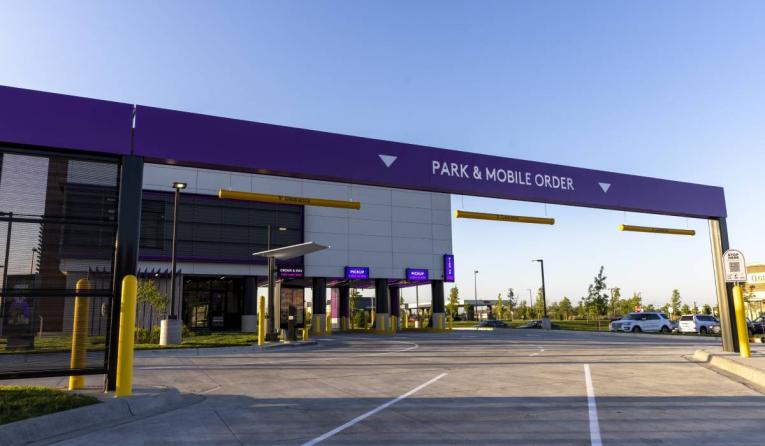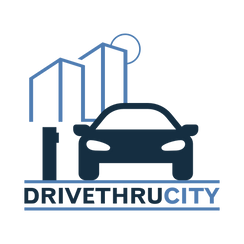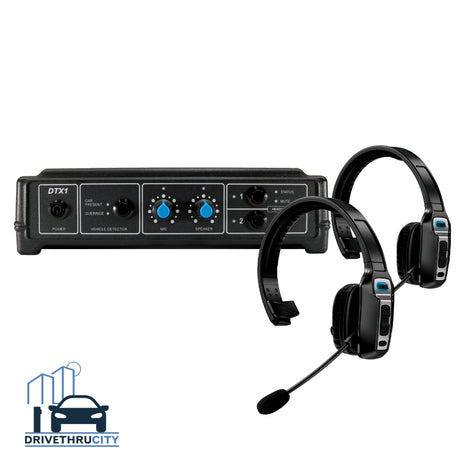3 Ways Digital is Changing the Drive-Thru Experience
Posted by XMOD LLC

Kevin Rice
At Taco Bell's "Defy," three of the four drive-thru lanes are dedicated to mobile orders.
The drive-thru has always been the most profitable area for many quick-serve restaurants. According to QSR and Insula Research, 50–70 percent of fast food sales come through the drive-thru. In some restaurants, that number is as high as 90 percent.
During the pandemic, drive-thrus became even more vital, and as consumer preferences quickly shifted to digital ordering via websites and apps, brands began to formulate plans to optimize the drive-thru for the long term. Now, technology such as geofencing, apps, and license plate recognition software are hybridizing the drive-thru experience, creating a cohesive digital ecosystem from online to on-site—a tactic which not only offers deep insights into customer behavior, but also makes for a more enjoyable and convenient guest experience.
Supercharging dedicated drive thru lanes with order-ahead apps
Being able to order online and pick up food in the drive-thru makes for a faster, more personalized guest experience. Guests can order exactly what they want on their own device without judgment or miscommunication at the speaker terminal. They can also pay quickly and securely using mobile payment options, meaning they do not have to carry cash or have strangers handle their credit card. And since customers input orders themselves, the kitchen contends with fewer mistakes.
Most importantly, apps improve ROI: they help lower costs associated with labor and food waste, plus provide insights into crucial data points such as which items a customer usually orders, what time of day they order, and how much they typically spend.
When paired with dedicated “VIP” drive-thru lanes for rewards members, apps can supercharge the guest convenience factor.
Chick-fil-A—a brand known for its fast, friendly service—rolled out dedicated drive-thru lanes for app orders at 60 stores in the summer of 2022. Taco Bell introduced its “Defy” concept over the summer as well. At the two-story, drive-thru-only Minneapolis location—where orders are delivered from the second-floor kitchen via a “food tube”— three of the four drive-thru lanes are dedicated to mobile orders, providing fast, skip-the-line service for customers who order via the Taco Bell app and third-party delivery services. Jack in the Box also eschews in-room dining at its Restaurant of the Future locations in favor of a drive-thru-only model. Throughout the pandemic, 98 percent of the Jack in the Box’s sales have come through the channel.
Entice customers to the drive-thru using geolocation
Geolocation is a powerful tool that, when used correctly, can increase sales and customer satisfaction. Using geolocation, push notifications can be sent directly to guests’ mobile devices when they enter a certain radius of a restaurant’s physical location. Push notifications can remind customers about your latest LTO, offer a discount for lapsed customers, or an offer to come in for a meal that will elevate them to the next level of loyalty rewards.
When customers respond to these push notifications, they can then use the aforementioned dedicated drive-thru lanes to pick up their food, making for a seamless and cost-effective digital experience. When sent at peak dining times, push notifications can be the deciding factor between whether a guest chooses to eat at your restaurant, or somewhere else.
Create über-personalized experiences with license plate recognition software
Using license plate recognition—which users enable through a restaurant’s loyalty app—restaurants can provide a uniquely personalized drive-thru experience for each vehicle. The technology notifies the location when a customer enters the premises; from there, the drive-thru experience can be tailored specifically with product recommendations and upsells on outdoor displays, as well as a personalized greeting at the order point. Finally, payment is fast and frictionless when customers are signed up for mobile pay.
Ever since their proliferation in the 1950s, drive-thrus have been an integral part of the quick-serve restaurant business and profitability model. In the post-pandemic era, they are more important than ever, helping businesses streamline profits and upgrade customer service as technology becomes more ubiquitous and user friendly. Using tools such as the ones discussed here, quick serve restaurants can build better brand engagement in the drive-thru.
Kevin Rice is EVP of Restaurant and Convenience at Bounteous. Rice’s experience driving digital growth for brands has established him a leading voice for digital transformation in the restaurant and C-store industries.



